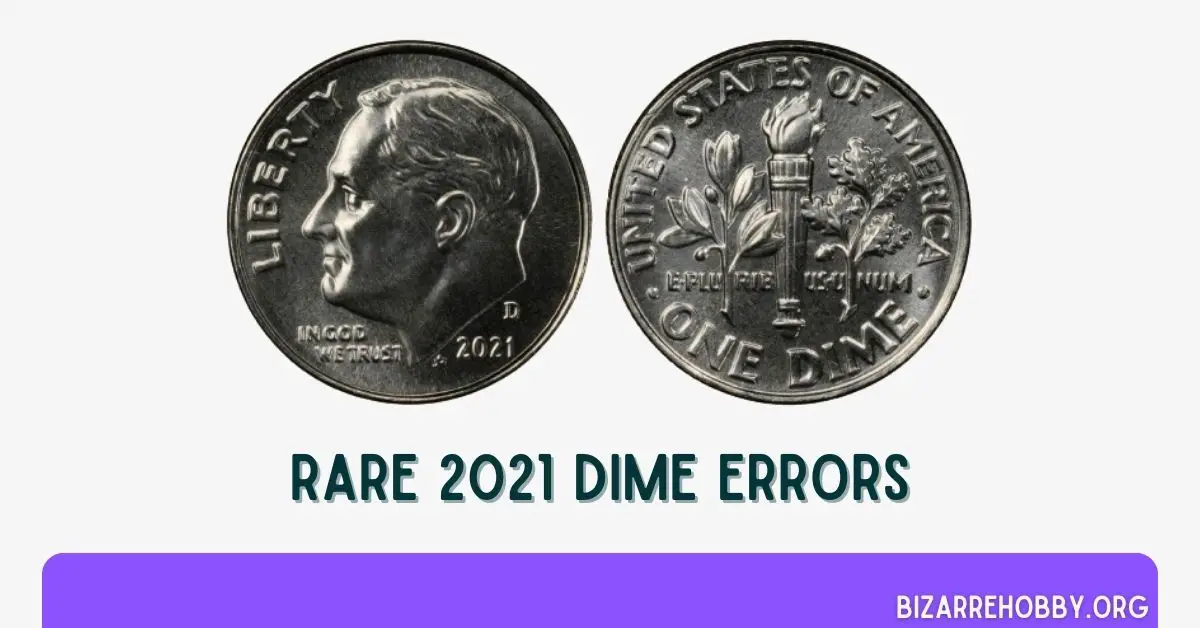The United States dime, a 10-cent coin, remains one of the few denominations that are cost-effective to produce, with the U.S. Mint spending only 5 cents to manufacture each piece. This 50% profit margin, known as seigniorage, benefits the government. However, in the realm of coin collecting (numismatics), dimes with minting errors can be worth significantly more than their face value.
Let’s explore a comprehensive list of 2021 dime errors, examining notable mint flaws and their potential market value.
1. 2021-P Dime Die Chips and Cracks
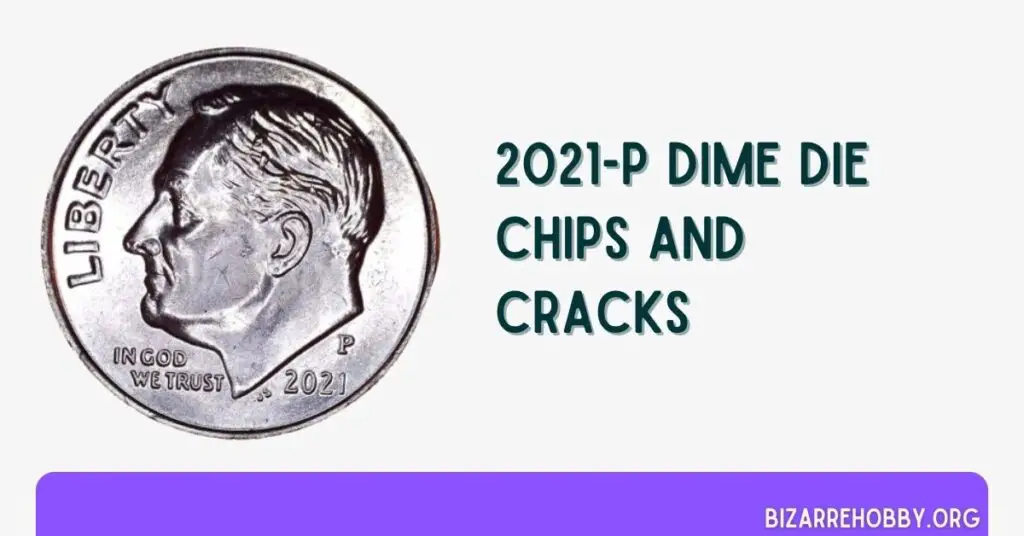
Modern coin production involves a complex process that has evolved from manual engraving to digital technology. Today, computer-guided machines create master hubs, which are used to produce working dies. These dies then strike blank metal discs (planchets) to create coins.
As dies age and sustain damage, they can develop imperfections like cracks, chips, and gouges. These flaws are then transferred to the coins during striking, resulting in what numismatists call “cud errors.” On this 2021 Philadelphia-minted dime, you can observe a noticeable scratch in President Franklin D. Roosevelt’s hair. Additional die chips appear around his eye, nose, and mouth on the obverse (front) side of the coin.
2. 2021-P Dime Rim Damage
Coin edges have come a long way since ancient times when each piece was hand-carved. The introduction of milling machines in the late 17th century allowed for the addition of uniform borders, reeded edges, and even text along the coin’s rim. These features serve multiple purposes: they ensure consistent metal content, weight, and diameter; facilitate stacking; and deter counterfeiting.
This particular 2021 dime shows subtle damage to its rim. Under magnification, you can spot mild bumps near the phrase “IN GOD WE TRUST” on the lower rim and close to “LIBERTY” on the upper rim. While minor, these imperfections can be of interest to error coin collectors.
3. 2021-P Dime Spike and Finning
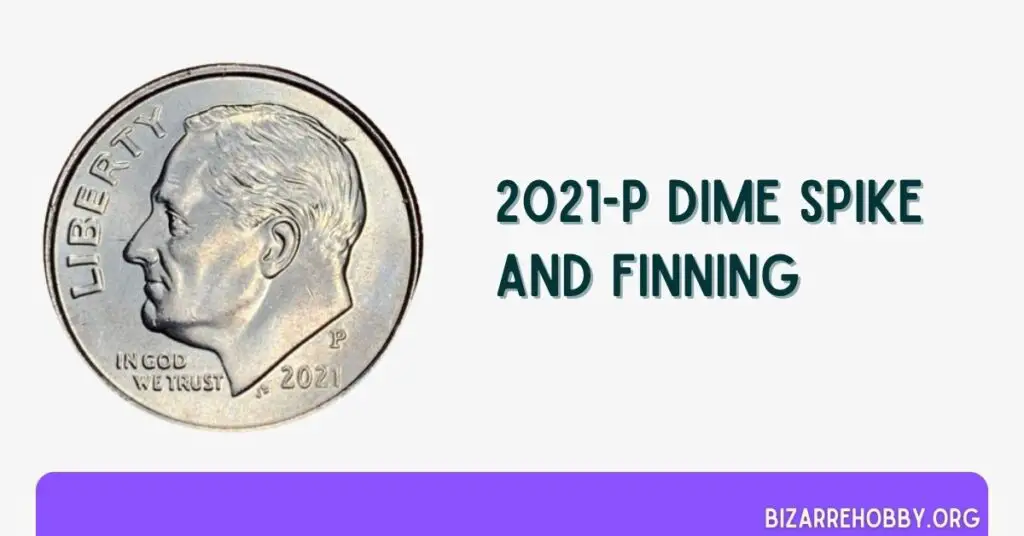
Many 2021 Philadelphia-minted dimes have been found with a specific type of rim damage called “finning.” This occurs when the outer edge of the rim is raised, creating a rough, ledge-like feel. Finning typically results from excessive striking pressure or when the die hits the planchet at an angle, forcing the raised collar even higher.
This example displays finning on both the obverse and reverse, suggesting a possible misalignment of the planchet by the feeder mechanism. Additionally, there’s a prominent die crack resembling a spike protruding from the back of Roosevelt’s head, giving rise to its “spike error” nickname.
4. 2021-P Dime DDR and Die Crack

Die cracks and chips can create interesting effects on coins, similar to imperfections in screen printing or potato printing. When metal flakes off the die, it can result in raised areas or “blobs” on the struck coin.
This 2021 Philadelphia dime exhibits a teardrop-shaped mass of excess metal near the torch, just above the “DI” in “DIME.” The coin also shows signs of doubling, which is relatively rare in modern, digitally-struck coins. While this particular piece isn’t officially verified, the owner describes it as a Doubled Die Reverse (DDR) due to the shadow effect visible on the reverse side.
5. 2021-D Dime DDO and DDR
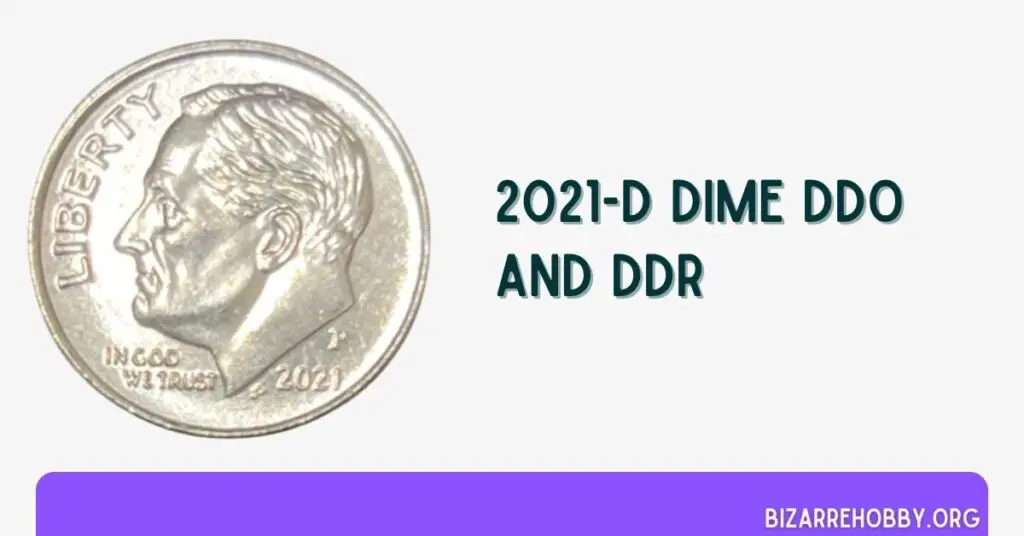
Doubling errors can occur during different stages of the minting process. In the past, coins often required multiple strikes to ensure a clear design, and any misalignment between strikes could result in doubling. In modern minting, doubling more commonly occurs during the hubbing process, when the working dies are created.
This Denver-minted dime displays doubling on both the obverse (DDO) and reverse (DDR) sides. Such dual doubling is particularly rare and can significantly increase a coin’s value to collectors.
6. 2021-P Dime Die Clash
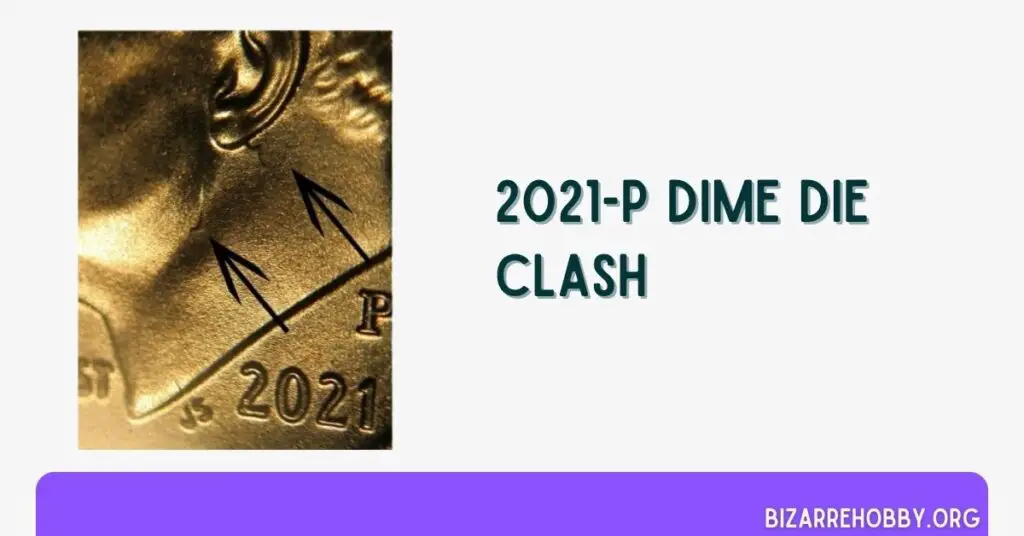
Timing is crucial in the coin minting process, especially when feeding planchets into the press. If the feeder mechanism is too slow, a planchet might be struck multiple times, resulting in multi-strike or off-center errors. Conversely, if it’s too fast, the dies might strike each other without a planchet between them.
When dies clash, design elements from one die can transfer to the other. This 2021 Philadelphia dime shows evidence of a die clash, where traces of the reverse design (such as the torch) may be faintly visible on the obverse side, superimposed on Roosevelt’s portrait.
7. 2021-P Dime Lamination Error
Modern U.S. coins typically consist of a copper core with a cupronickel cladding. During the minting process, if the planchet is improperly alloyed or the striking pressure is too high, the outer layer can crack, slip, or peel off, revealing the copper beneath.
This 2021 Philadelphia dime exhibits a lamination error, visible as a gash across Roosevelt’s head. While it might be mistaken for a die break, professional grading can confirm the nature of the error. Even without official certification, dramatic errors like this can be valuable to collectors.
8. 2021-P Dime Strike Through
In numismatic circles, precise terminology is important. A “strike-through” error occurs when a foreign object gets between the die and the planchet during striking. This can leave an impression or shadow on the coin’s surface.
This uncertified 2021 Philadelphia dime shows evidence of a strike-through, likely caused by a piece of wire that left a mark above Roosevelt’s jawline. Such errors can range from subtle to dramatic, depending on the size and nature of the foreign object.
9. 2021-D Dime Struck Thru with Weak Date
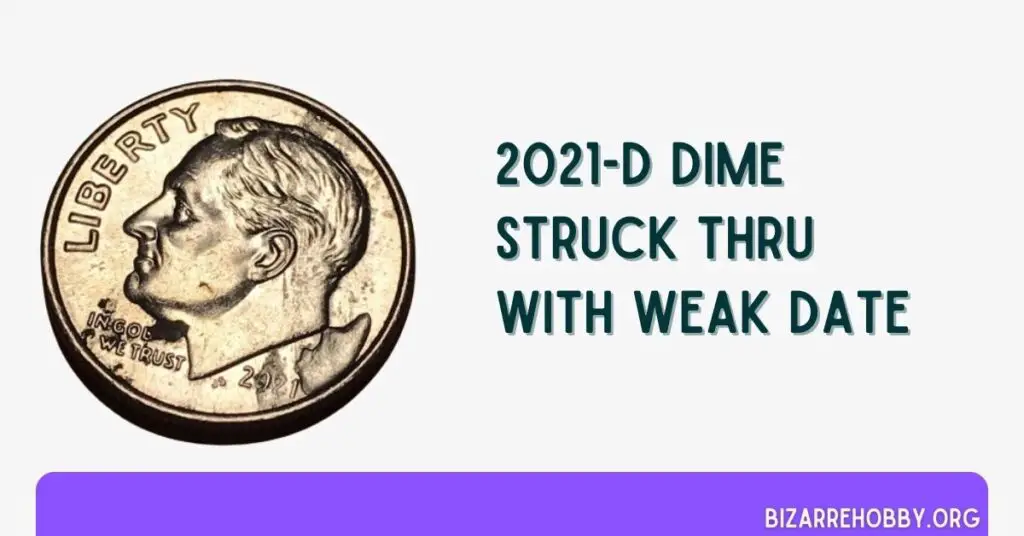
Strike-through errors can vary in appearance and severity. In some cases, the foreign object may leave behind traces or even remain attached to the coin. This Denver-minted dime (though the mint mark is partially obscured) shows a significant strike-through error that has affected the date and left a large gash behind Roosevelt’s portrait.
The coin also exhibits signs of environmental damage, possibly from exposure to water or corrosive substances, resulting in discoloration. However, the reverse side appears normal, making this an intriguing example for error collectors.
10. 2021-D Dime with DDO, DDR, and Off-Center
This Denver dime showcases multiple errors, making it a particularly interesting specimen for collectors. It exhibits doubling on both the obverse (DDO) and reverse (DDR) sides, which is often most noticeable in the coin’s lettering and numbers.
Additionally, the coin is slightly off-center, meaning a small portion of the design is missing due to misalignment during striking. The combination of these three errors – DDO, DDR, and off-center strike – significantly increases the coin’s potential value.
11. 2021-P Dime Obverse Clad Missing
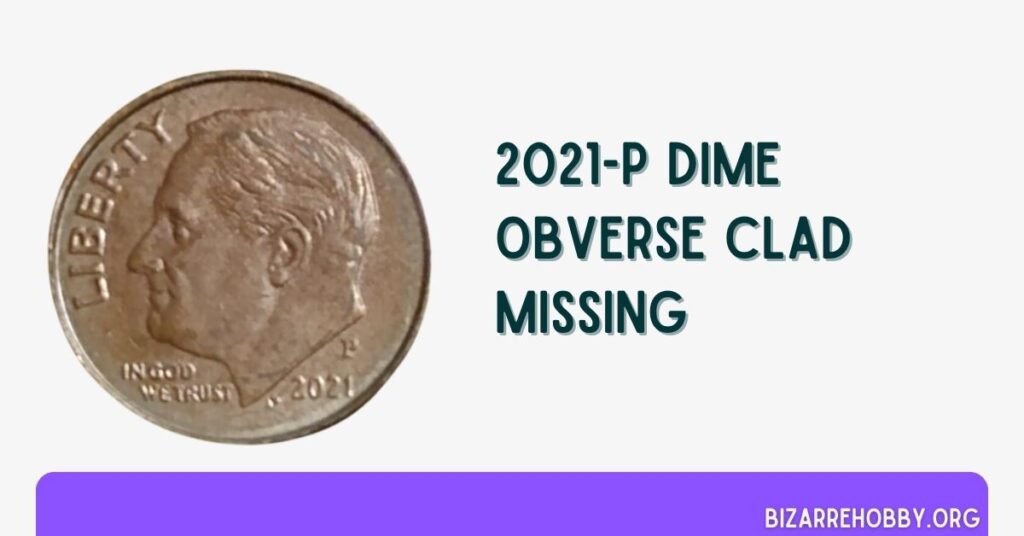
Cladding errors can occur when the outer layer of a coin’s metal composition is compromised during the minting process. In some cases, large portions of the cladding may be missing, revealing the core metal beneath.
This 2021 Philadelphia dime shows exposed copper on high-relief areas of Roosevelt’s portrait, including his cheek, ear, and temple. While it’s possible this could be a minting error, it’s more likely the result of post-mint damage or wear. Professional grading would be necessary to determine the true nature and value of this coin’s condition.
Final Thoughts
All in all, the world of error coins offers fascinating insights into the minting process and provides collectors with unique, valuable specimens. While some errors are dramatic and easily recognizable, others require expert examination to verify. Whether you’re a seasoned numismatist or a curious beginner, exploring these 2021 dime errors can be an exciting and educational journey into the intricacies of coin production and collecting.
